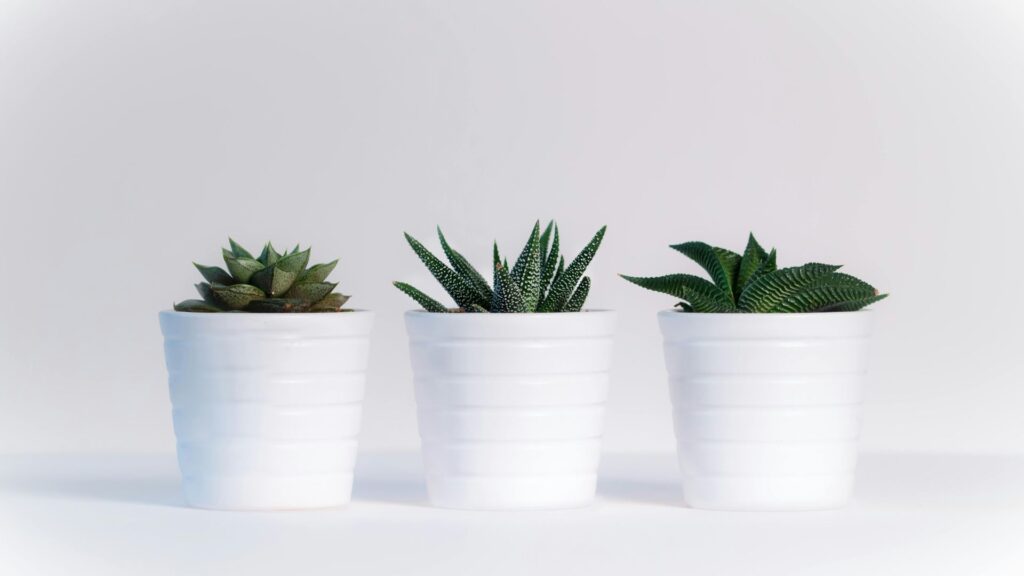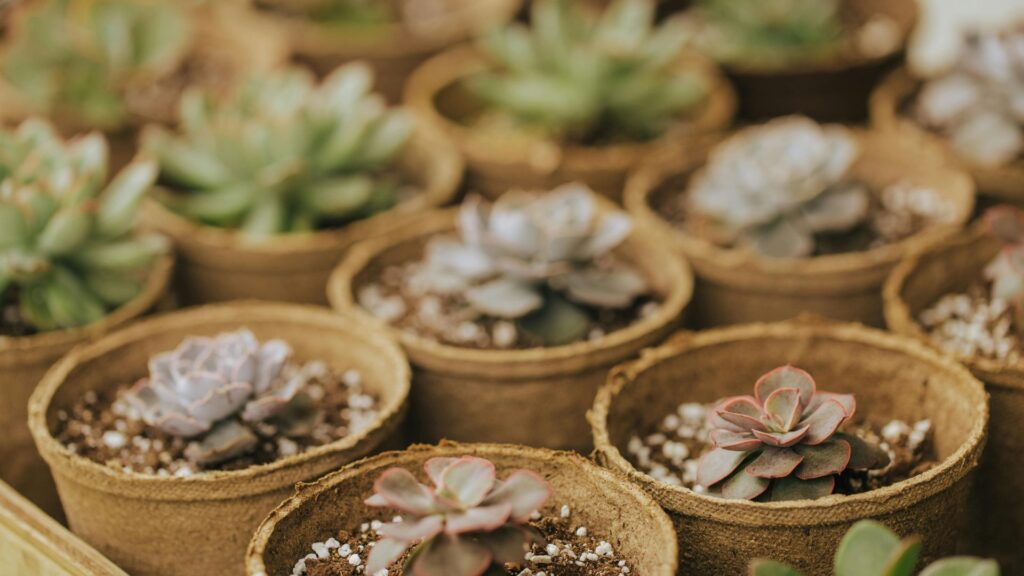Cacti are quite unique plants, because they are hardy and, they are ideal for indoor growing. Growing cacti with a bit of care can beautify your home.
Here’s a guide to help you succeed in growing cacti indoors.
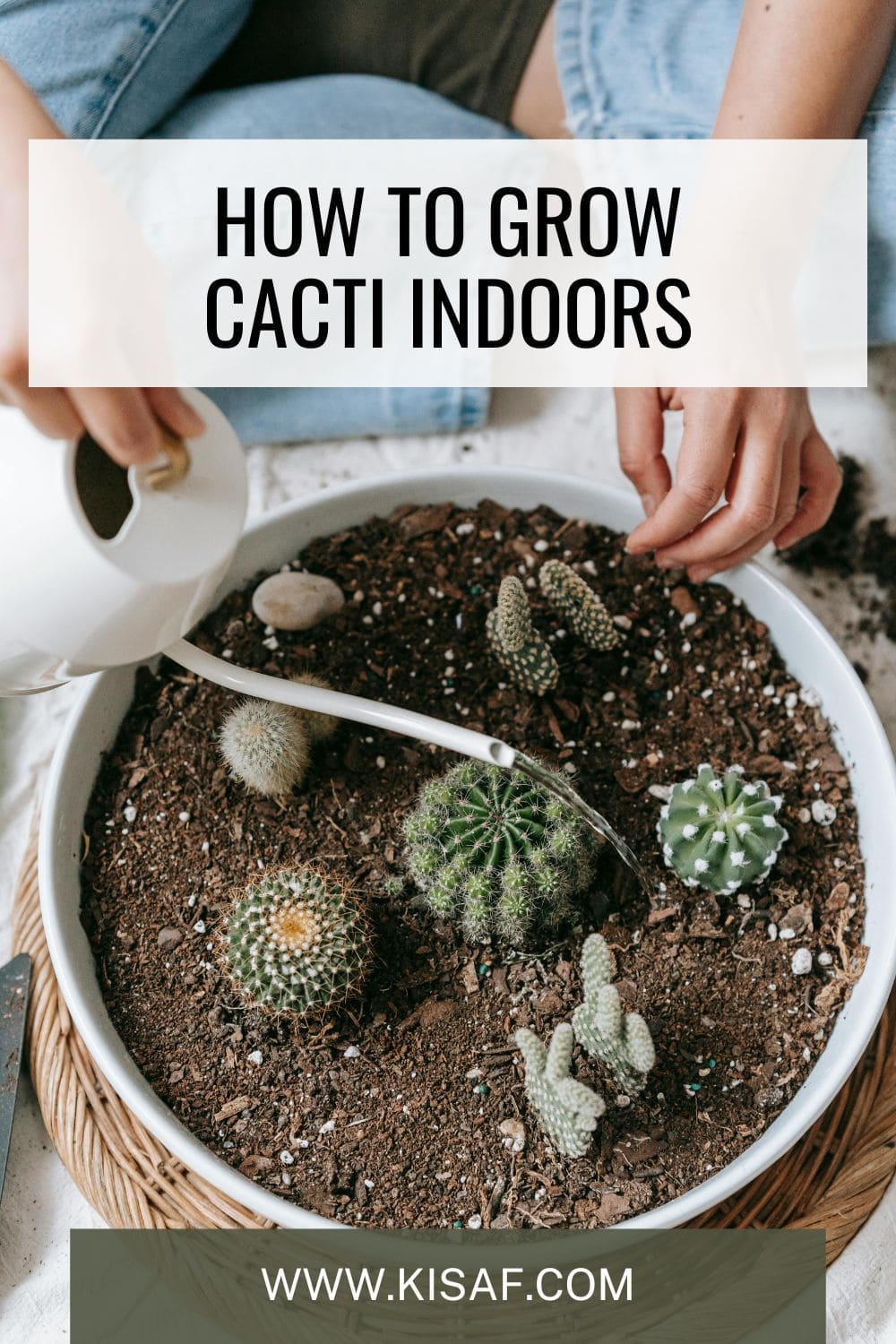
How To Choose the Right Cactus?

What Are The Types of Cacti?
You can choose from many types of cacti and some popular indoor cacti include:
- Christmas Cactus: Known for its vibrant blooms.
- Barrel Cactus: Round and ribbed, it’s easy to care for.
- Fairy Castle Cactus: Tall with spires, it looks like a miniature castle.
- Prickly Pear: Recognizable by its flat pads.
How Do You Select Healthy Plants?
When you’re buying plants choose firm strong plants and avoid any with soft spots, discoloration, or signs of rot.
A healthy cactus will have an even color and no weird marks and, in my opinion smaller cacti adapt better to indoor environments.
How To Prepare Cacti Environment?

What Are The Light Requirements?
Cacti love light so, place them near a south or west-facing window. They need at least six hours of direct sunlight daily.
If natural light is not sufficient, consider using grow lights, LED grow lights are energy-efficient and effective.
What Is The Best Temperature?
Cacti prefer warm temperatures. Ideal ranges are between 65°F to 80°F (18°C to 27°C) during the day. At night, a slight drop to 55°F to 65°F (13°C to 18°C) is acceptable. Avoid cold drafts and sudden temperature changes.
What is The Best Humidity?
Cacti are desert plants, so they prefer low humidity and in my opinion you should aim for 10% to 30% humidity.
You should avoid growing cacti in bathrooms or kitchens where humidity is higher.
Amazon Product Recommendation
If you're planning to do indoor gardening then you must a nice concrete pot, so here is one for you.
Disclaimer: Commissions are earned if you make a purchase through these links at no extra cost to you.

Potting Your Cactus
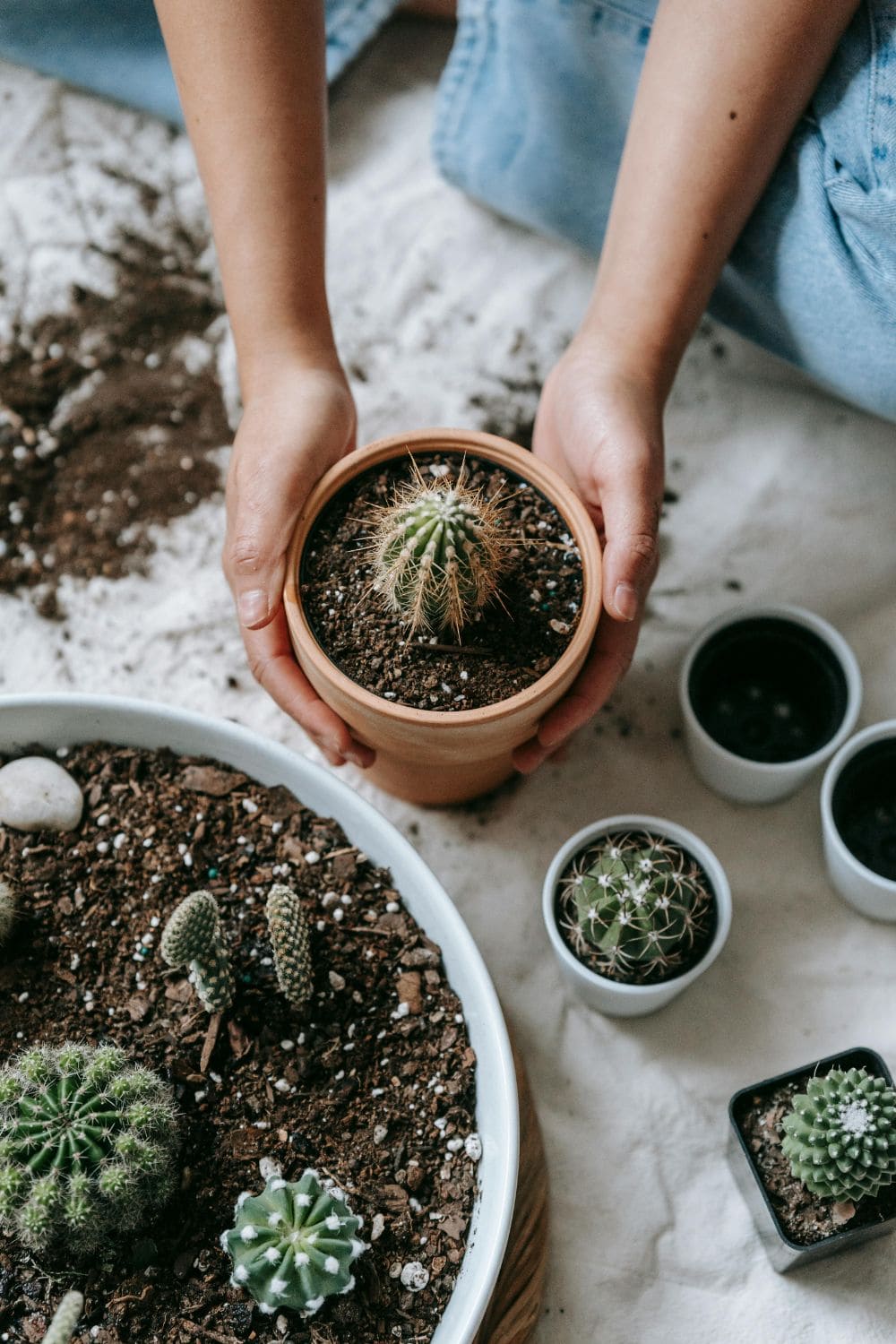
How To Choose the Right Pot?
Make sure to select pot with proper drainage holes, terracotta pots are excellent because they’re porous.
This helps in preventing overwatering. The pot size should be slightly larger than the cactus and avoid overly large pots, which hold moisture.
Related: How To Choose The Right Pots For Indoor Plants
What Is The Best Soil Mix?
Use a well-draining cactus soil mix, you can buy pre-made cactus soil or make your own.
Mix equal parts of potting soil, coarse sand, and perlite, this ensures good drainage and prevents root rot.
What is the Planting Process for Cacti?
- Fill the pot: Add a layer of gravel at the bottom which improves drainage.
- Add soil: Then fill the pot with your cactus soil mix, leaving space for the cactus.
- Position the cactus: Place the cactus in the center and ensure it’s upright and stable.
- Fill in: Add more soil around the cactus then press gently to secure it.
- Water lightly: Wait a few days before the first watering which allows any damaged roots to heal.
Watering and Feeding Your Cacti
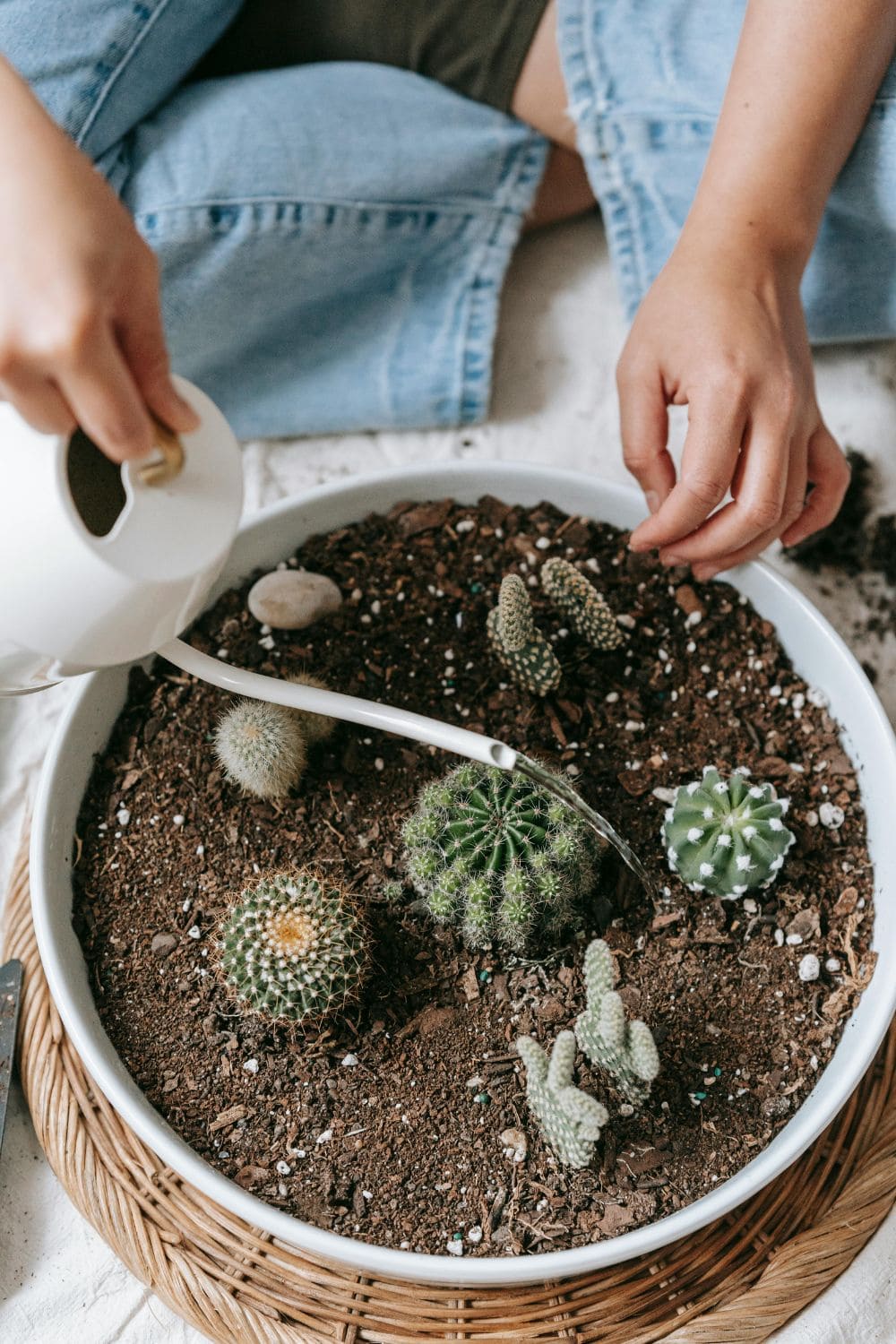
What Is The Best Watering Schedule?
Cacti need less water than other houseplants so make sure to water thoroughly but infrequently and let the soil dry out completely between waterings.
In the growing season which are summer and spring, water every 2-4 weeks and in winter, reduce watering to once every 4-6 weeks.
Overwatering is a common mistake, so always check soil moisture before watering.
Do Cacti Need Fertilizers?
Cacti do benefit from occasional feeding so use a cactus-specific fertilizer and dilute it to half strength.
Apply it during the growing season, about once a month and do not fertilize in winter. Remember, excessive fertilizing can harm the plant.
Related: Choosing The Best Fertilizers For Indoor Plants
Pruning and Maintenance
Do Cacti Require Pruning?
Cacti generally require little pruning, remove dead or damaged parts with clean, sharp scissors. Some cacti produce small baby plants and these can be removed and potted separately.
How To Repot Your Cactus?
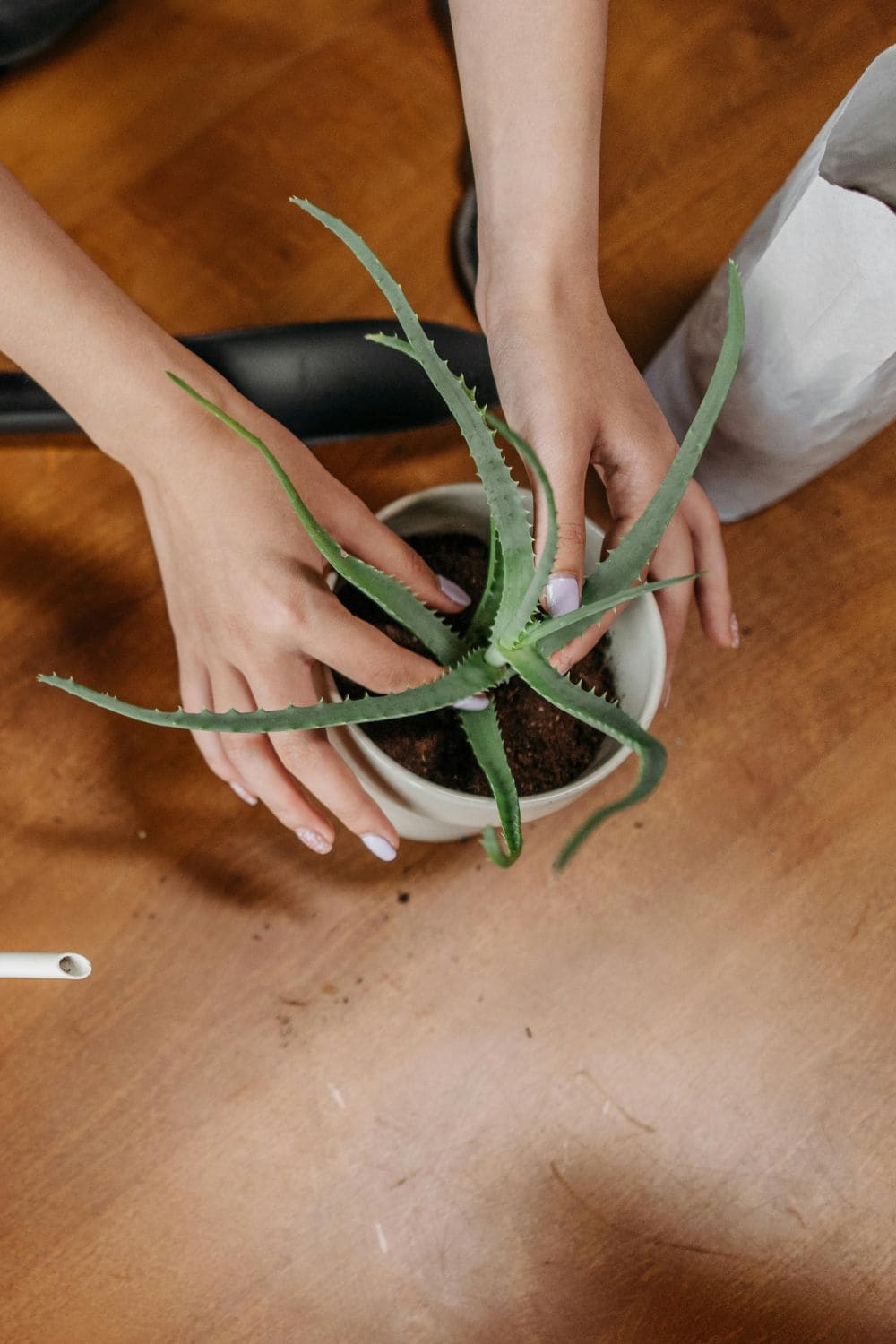
When to Repot?
Cacti need repotting every 2-3 years. Signs it’s time to repot include roots growing out of the drainage holes, or if the cactus has outgrown its pot.
How to Repot?
- Prepare: Wear gloves to protect your hands, gather your new pot and fresh soil mix.
- Remove the cactus: Gently loosen the soil around the cactus and carefully lift it out.
- Examine roots: Check for any damaged or rotting roots and then trim these away.
- Place in new pot: Fill the new pot with soil mix and position the cactus, then add more soil around it.
- Water sparingly: Water lightly after a few days and allow it to adjust to its new pot.
How Do You Propagate Cacti?
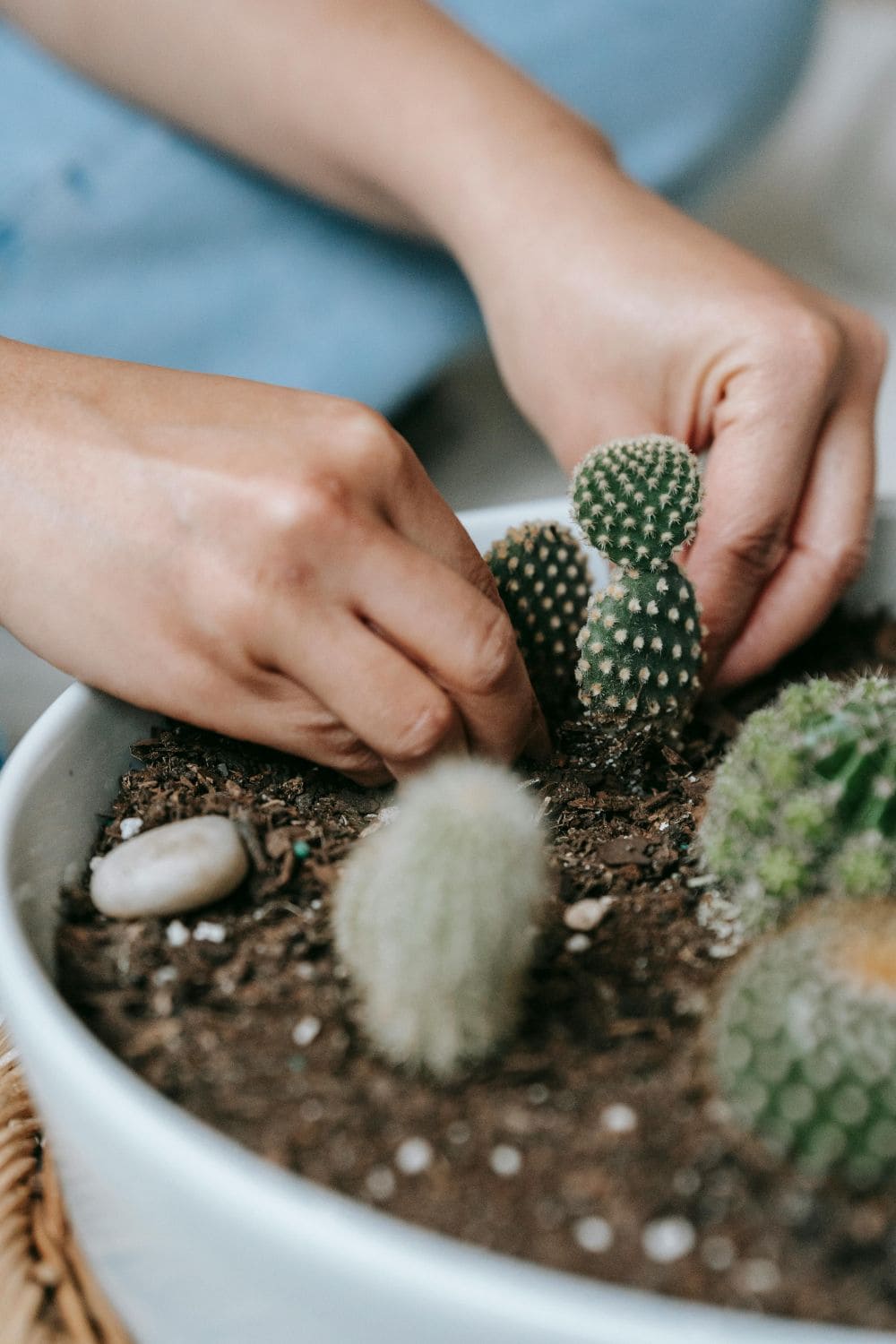
From Offsets
Many cacti produce offsets which are small plants that grow at the base. To propagate, gently twist the offset until it detaches and then let it dry for a few days to form a callus.
Plant in a small pot with cactus soil mix. and water sparingly until roots develop.
From Cuttings
Some cacti can be propagated from cuttings, so cut a healthy stem segment and let it dry and callous for a week. Plant the cutting in cactus soil, mix and water lightly, and wait for roots to form.
How To Display Your Cacti?
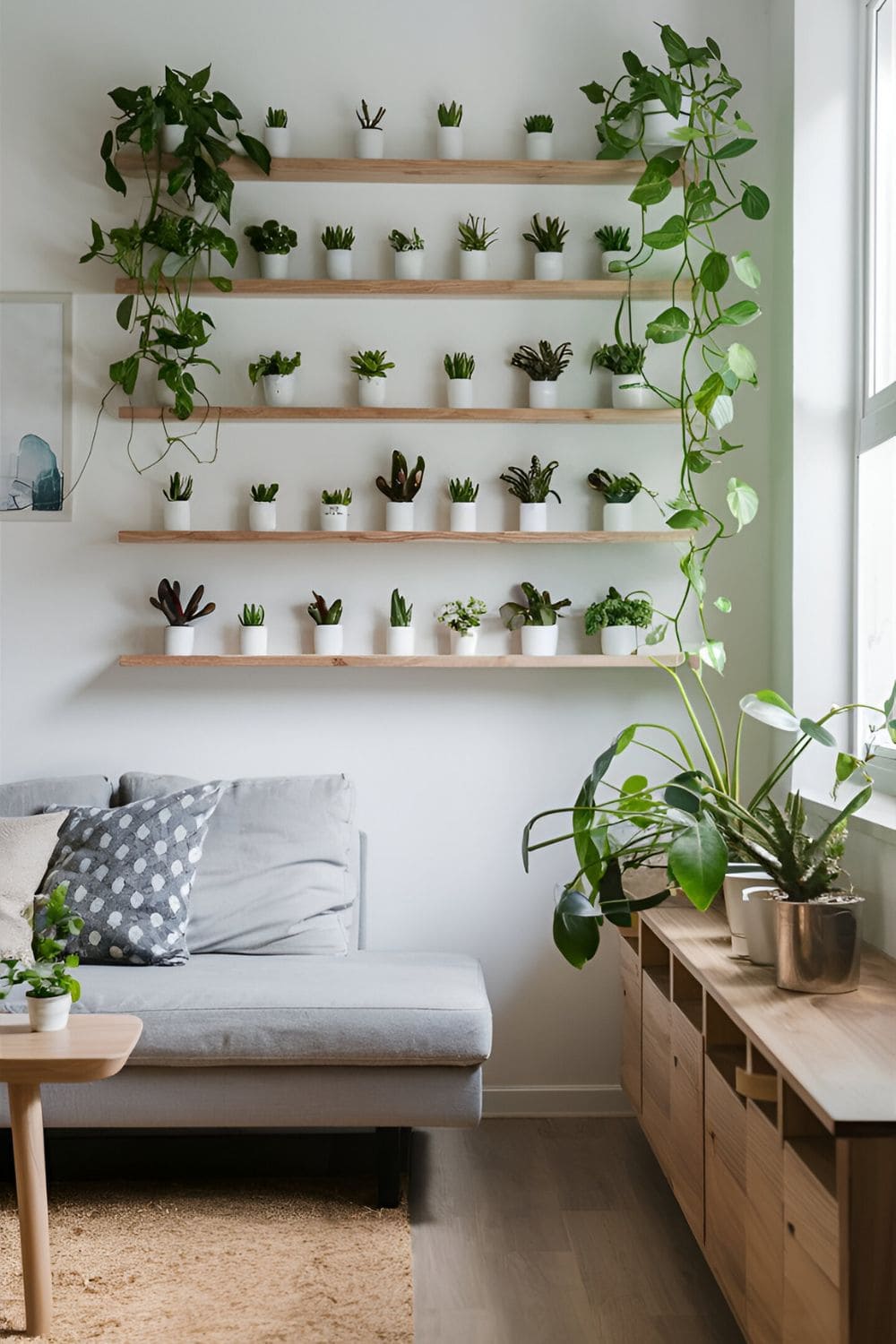
Cacti can be displayed in many ways and to add visual interest put many different kinds of cacti together and use decorative pots to enhance their appearance.
Consider a cactus garden in a shallow dish. Arrange them with rocks and sand for a desert look.
Related: Shelf Ideas For Indoor Plants
Conclusion
Growing cacti indoors is a very calming and rewarding experience and with proper care, they can thrive and add a unique touch to your home.
Remember to provide ample light, appropriate watering, and occasional feeding and monitor for pests and enjoy your beautiful plants.

